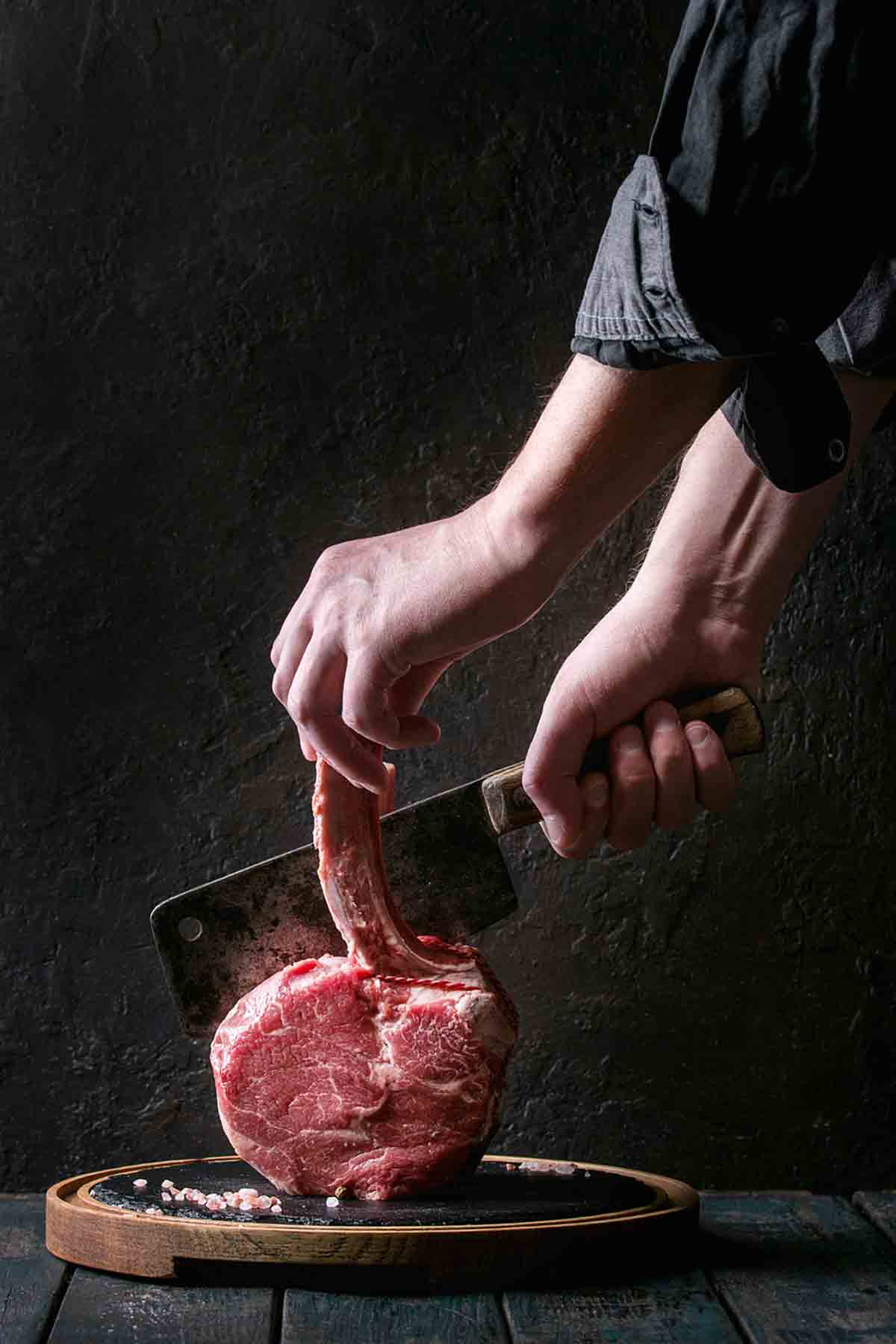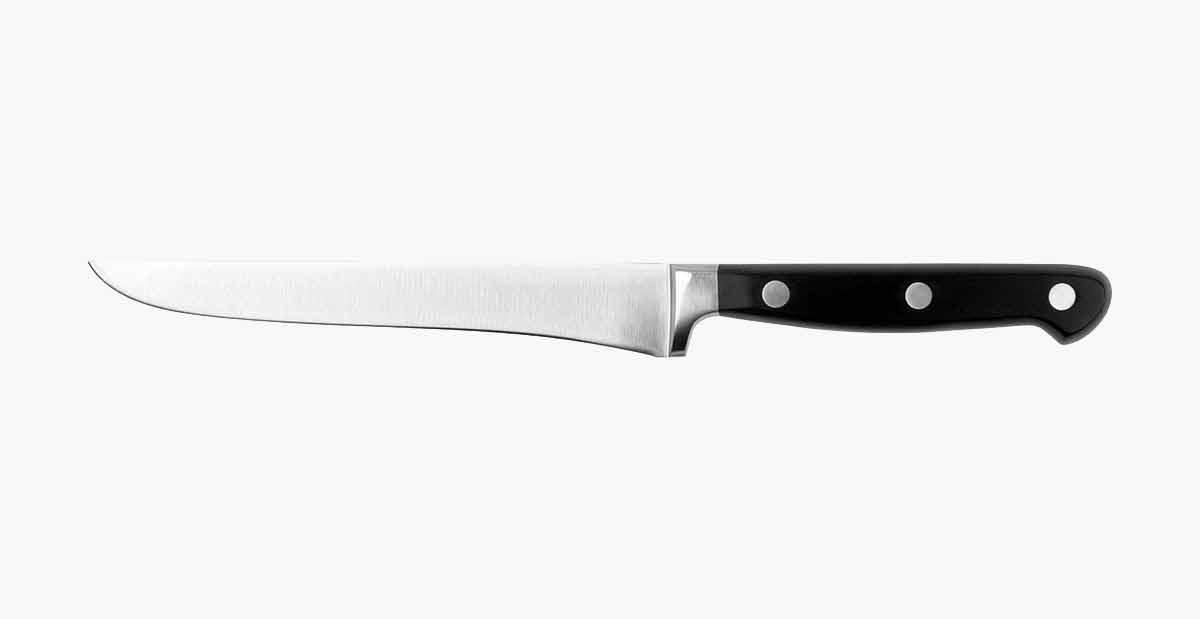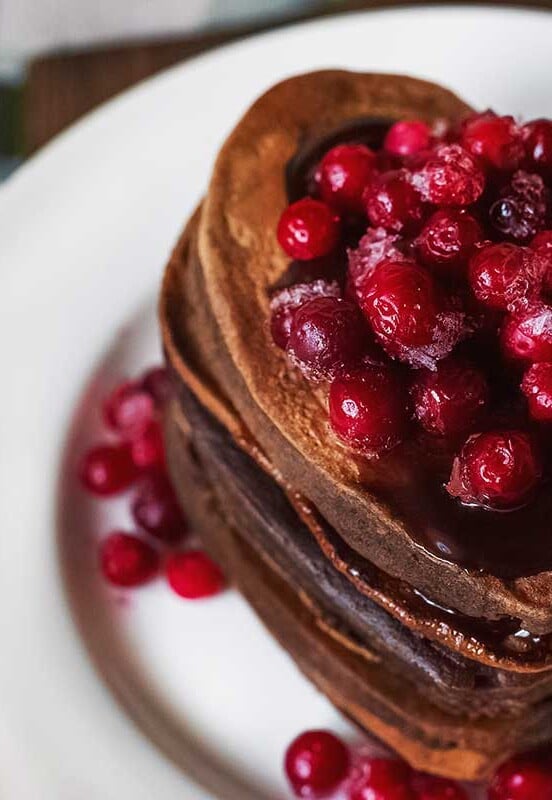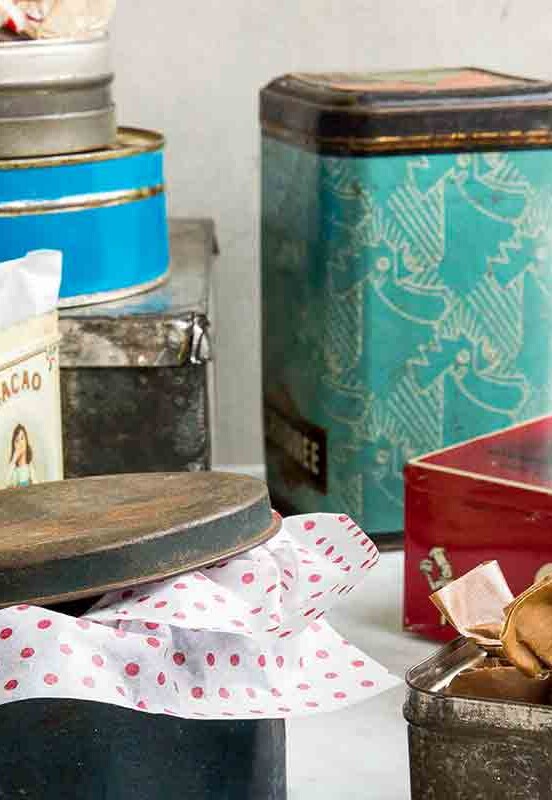
Let’s get one thing clear: I don’t mean “French” as in kissing. Yeah, it’s been a nutty year, but–please–not that nutty! (Although I’m sure there are some standing rib roast fans out there who’ve considered making out with their perfectly cooked holiday roast.)
I’m referring to the culinary term to French.
What does “to French” mean and why bother?
To French a rib roast, or chops for that matter, means to trim and scrape away the meat, fat, and sinew from the slender end of the ribs so that a section of the bones is exposed. It makes for a more elegant presentation. In days of yore, little frilly caps were slipped over the bones for looks and to protect those with delicate constitutions. Thankfully, they (the caps, not the diners) have slipped from fashion. Frenching the bone also makes for less mess at the table as well as in the kitchen as the bone ends, which heat up to a higher temperature, can burn, causing the fat to sputter and smoke.
What other terms also mean to “French” a rib roast?
“French a bone,” “clean a bone,” “trim a roast,” and “French trimming a roast” are different ways of saying the same thing.
What tools you’ll need
All you’ll need is a sharp boning knife or other narrow, flexible knife. The size and flexibility of the knife makes it easier to get in between and around the bones. A dry kitchen towel or a wad of paper towel helps you hold the meat steady with the other hand.

Video: How to French a Roast
Courtesy of Stauffers of Kissel Hill
- Place the rack on a cutting board with the fatty side up. Grab your boning knife and, starting 2 to 3 inches from the end of the bones, make a long cut lengthwise on top of the rack, using firm pressure to cut through the fat and underlying meat down to the bones.
- Remove the knife and carefully slice from the end of the bones inward, following the curve of the bones, until you reach your initial cut. Pull away the strip of meat and fat. Give it to the dog.
- Clean meat between the ribs by cutting straight down along one rib, then down the next, and cut across between them.
- Using the back of your knife to avoid unnecessarily dulling your blade, scrape off the rest of the meat, fat, and sinew from each rib bone. You want to get right down to the bone.
- Using your towel, grab each exposed bone and pull several times, cleaning off any last clinging bits.
Recipes that call for Frenching
Just about any dish that has ribs (ok, not fish) can be Frenched, but these are our most popular–and French-worthy–recipes.













Good to know, but what’s yummier than that dark, crisp fat from a long roast or the gravy and Yorshire Puddings that can’t be made from lean meat?
I like the way you’re thinking, Rainey, but fear not, a frenched roast should still yield enough of those delicious drippings for gravy or Yorkshire puddings.
And, Rainey, there’s nothing that says you can’t road those trimming in the pan along with the roast, if you want. Fat galore!